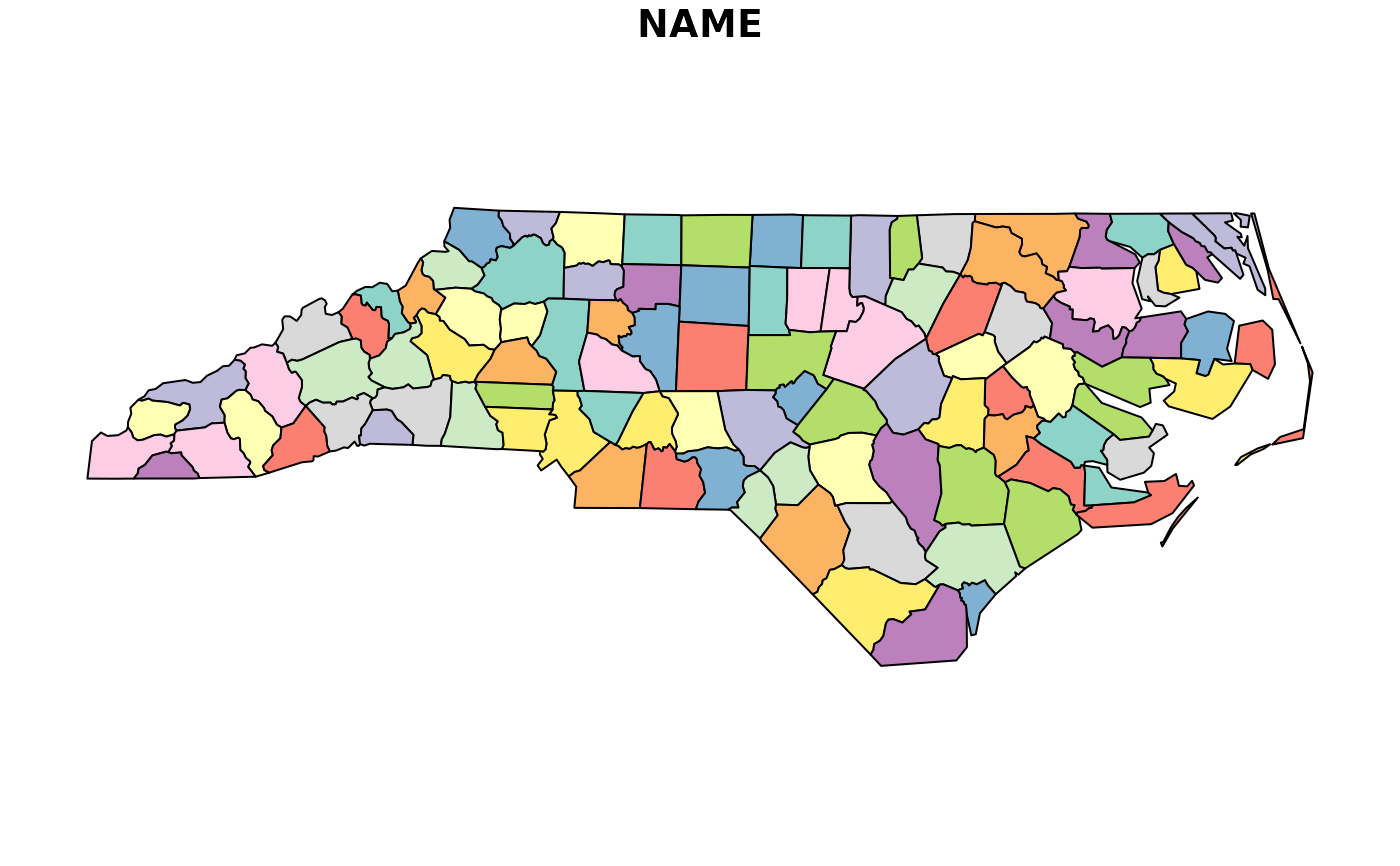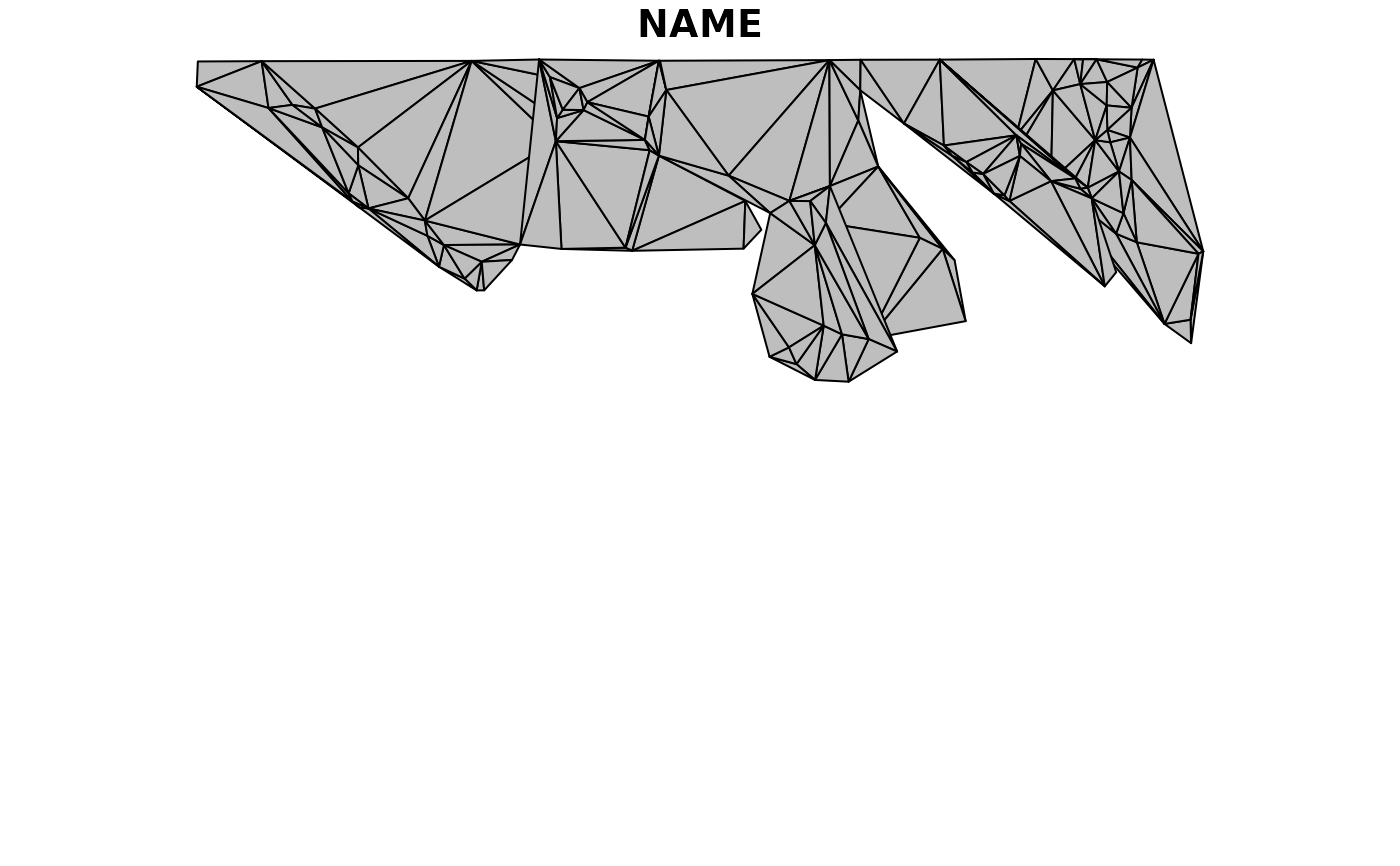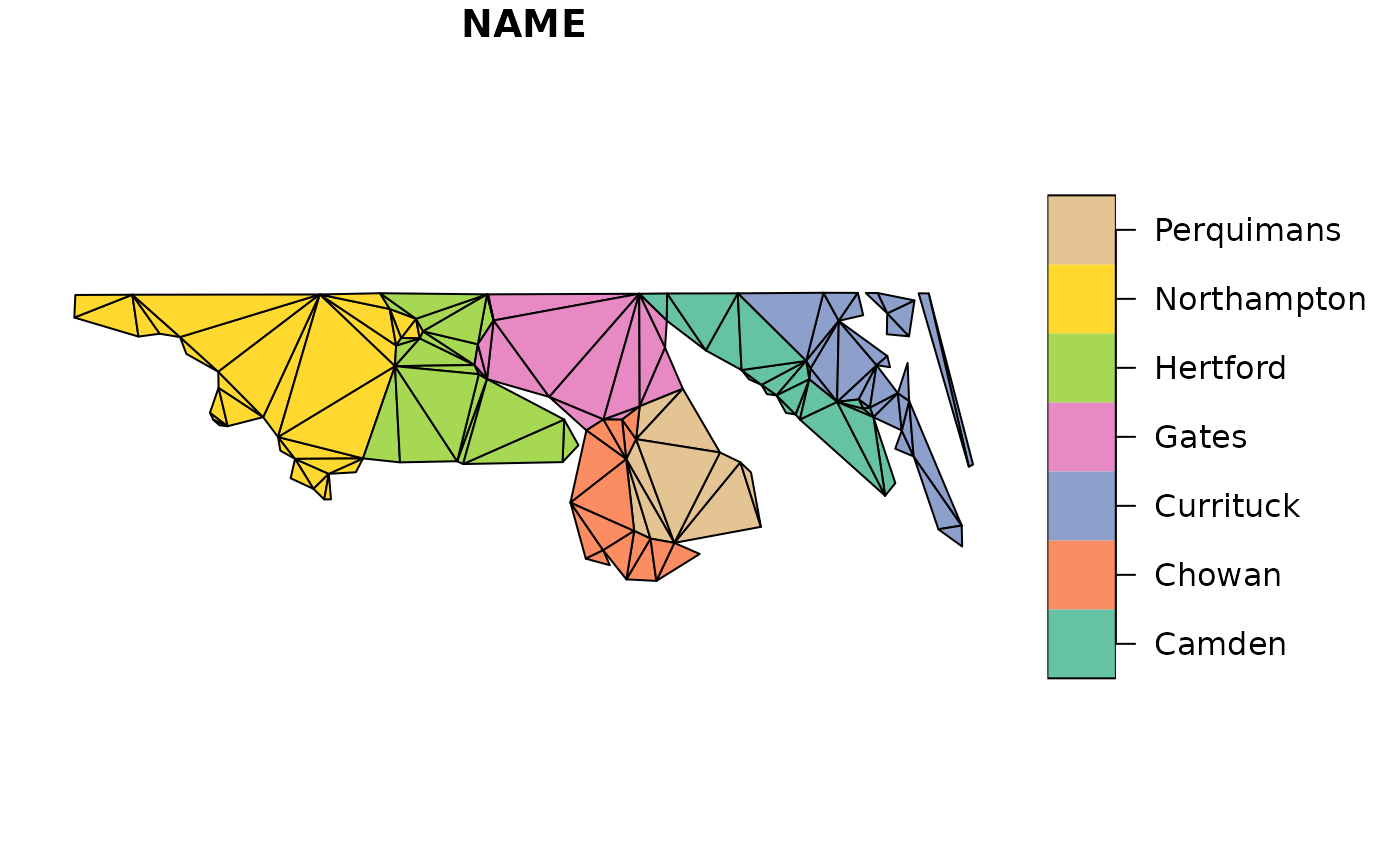Triangulate simple features including the input edges as constraints, rather than being bounded to the convex hull.
ct_triangulate(x, ...)
# S3 method for POINT
ct_triangulate(x, trim = TRUE, ...)
# S3 method for MULTIPOINT
ct_triangulate(x, trim = TRUE, ...)
# S3 method for GEOMETRYCOLLECTION
ct_triangulate(x, trim = TRUE, ...)
# S3 method for sfg
ct_triangulate(x, trim = TRUE, ...)
# S3 method for sfc
ct_triangulate(x, ...)
# S3 method for sf
ct_triangulate(x, trim = TRUE, ...)Arguments
- x
simple feature geometry or data frame
- ...
arguments for
triangulate, see details- trim
drop triangles that fall "outside" i.e. "holes" and non-convex regions,
TRUEby default
Details
This is not a Delaunay Triangulation by default, but is "mostly-Delaunay". Use the D = TRUE option,
passed to the underlying function in RTriangle to ensure the criterion is met, as well as edge constraints.
All POLYGON, LINESTRING, MULTIPOLYGON, and MULTILINESTRING inputs (including those in GEOMETRYCOLLECTION)
are broken down into line segments that are included in the mesh. Holes are removed
by default, but can be retained with the trim argument.
The triangles are collected as POLYGONs within a GEOMETRYCOLLECTION, and in the case of an sf object
it's returned within the original input data frame.
There's no way in this package to retain the set of shared vertices, or the segment or the triangle indices. It is a fundamental feature of the standard, that this information is not represented.
Further arguments may be passed down to the underlying triangulation function triangulate.
Note that planar coordinates are assumed, no matter what projection the input is in. There's no
sensible meaning to a value for a in units m^2 for a layer that is in longitude/latitude, for those
use "area in square degrees", the straightforward meaning in planar coordinates.
These arguments are, from the documentation of that function:
- a
a Maximum triangle area. If specified, triangles cannot be larger than this area.
- q
Minimum triangle angle in degrees.
- Y
If
TRUEprohibits the insertion of Steiner points on the mesh boundary.- j
If
TRUEjettisons vertices that are not part of the final triangulation from the output.- D
If
TRUEproduce a conforming Delaunay triangulation. This ensures that all the triangles in the mesh are truly Delaunay, and not merely constrained Delaunay. This option invokes Ruppert's original algorithm, which splits every subsegment whose diametral circle is encroached. It usually increases the number of vertices and triangles.- S
Specifies the maximum number of added Steiner points.
- V
Verbosity level. Specify higher values for more detailed information about what the Triangle library is doing.
- Q
If
TRUEsuppresses all explanation of what the Triangle library is doing, unless an error occurs.
Note
GEOMETRYCOLLECTION as input is not yet supported.
Examples
library(sf)
nc <- read_sf(system.file("shape/nc.shp", package="sf"), quiet = TRUE)
nc_triangles <- ct_triangulate(nc[, c("NAME", "geometry")])
plot(nc[, "NAME"])
plot(nc_triangles, add = TRUE, col = NA, lty = "dotted")
 idx <- c(4, 5, 6, 7, 8, 20, 21)
op <- par(mfrow = c(2, 1))
if (packageVersion("sf") <= '0.2.8'){
nc <- st_transform(nc, "+proj=eqc +ellps=WGS84")
}
plot(st_triangulate(nc[idx, c("NAME", "geometry")]), col = "grey")
#> Warning: st_triangulate does not correctly triangulate longitude/latitude data
idx <- c(4, 5, 6, 7, 8, 20, 21)
op <- par(mfrow = c(2, 1))
if (packageVersion("sf") <= '0.2.8'){
nc <- st_transform(nc, "+proj=eqc +ellps=WGS84")
}
plot(st_triangulate(nc[idx, c("NAME", "geometry")]), col = "grey")
#> Warning: st_triangulate does not correctly triangulate longitude/latitude data
 ## Warning ct_triangulate does correctly triangulate longitude/latitude data
plot(ct_triangulate(nc[idx, c("NAME", "geometry")]))
## Warning ct_triangulate does correctly triangulate longitude/latitude data
plot(ct_triangulate(nc[idx, c("NAME", "geometry")]))
